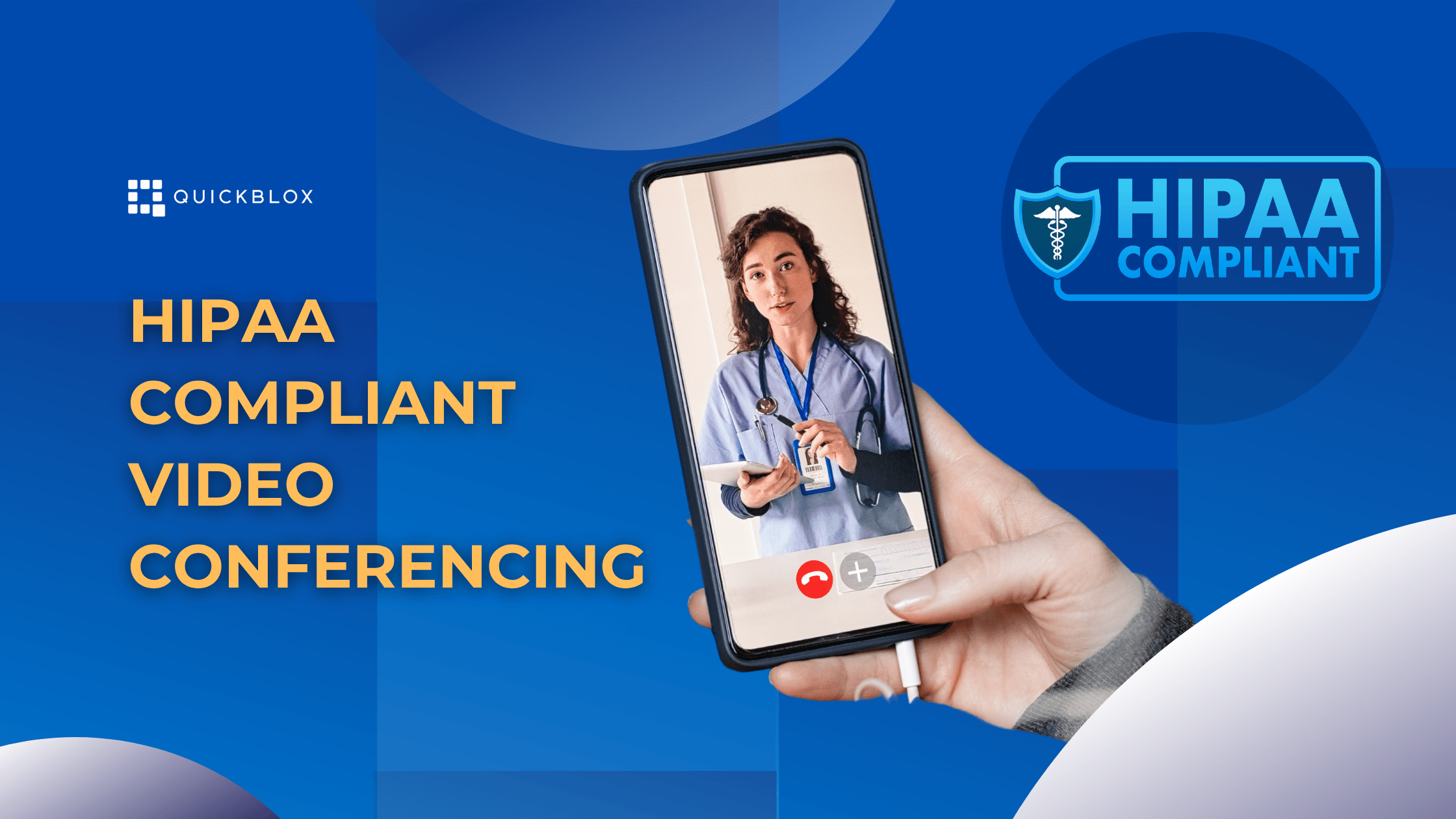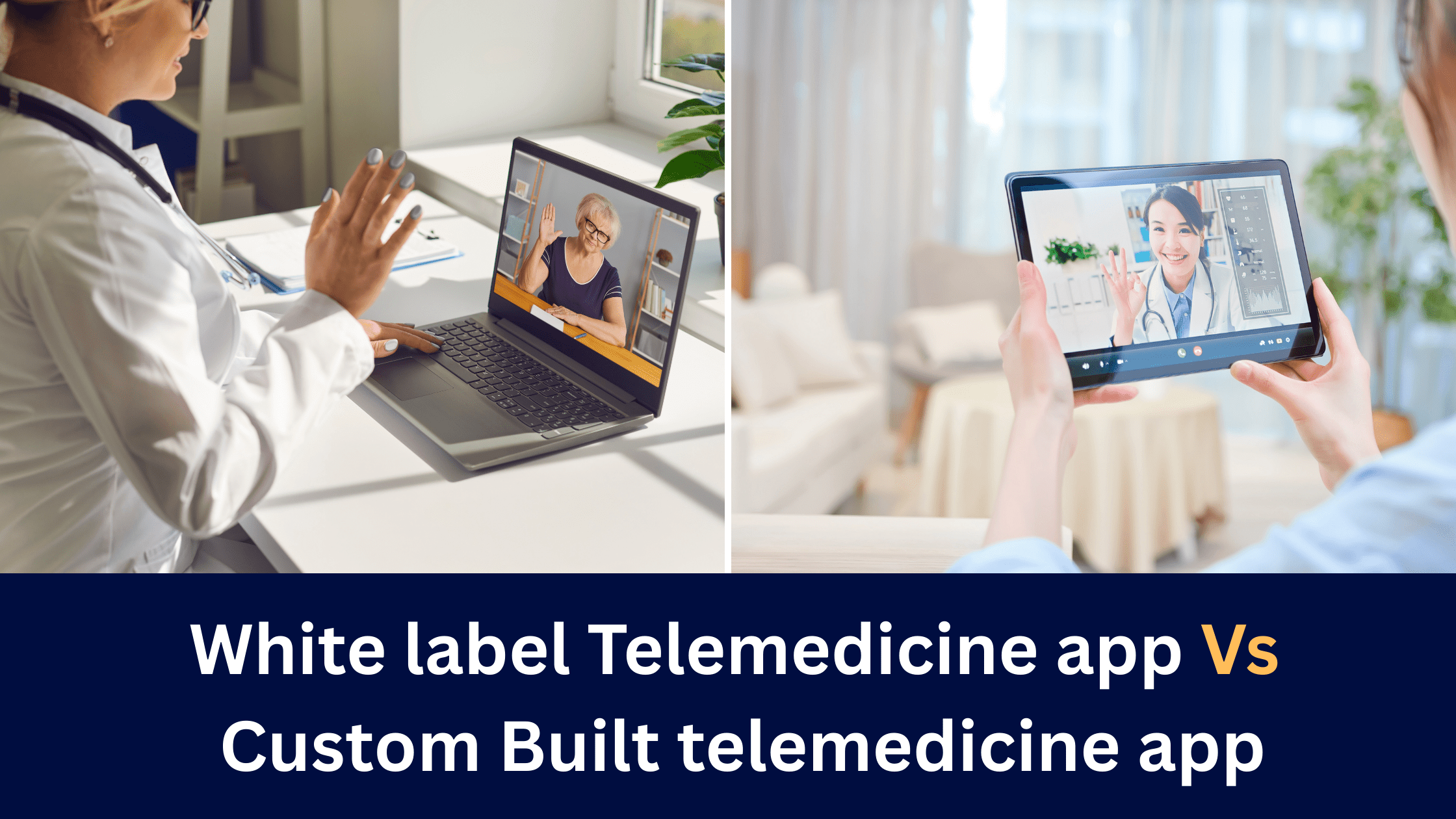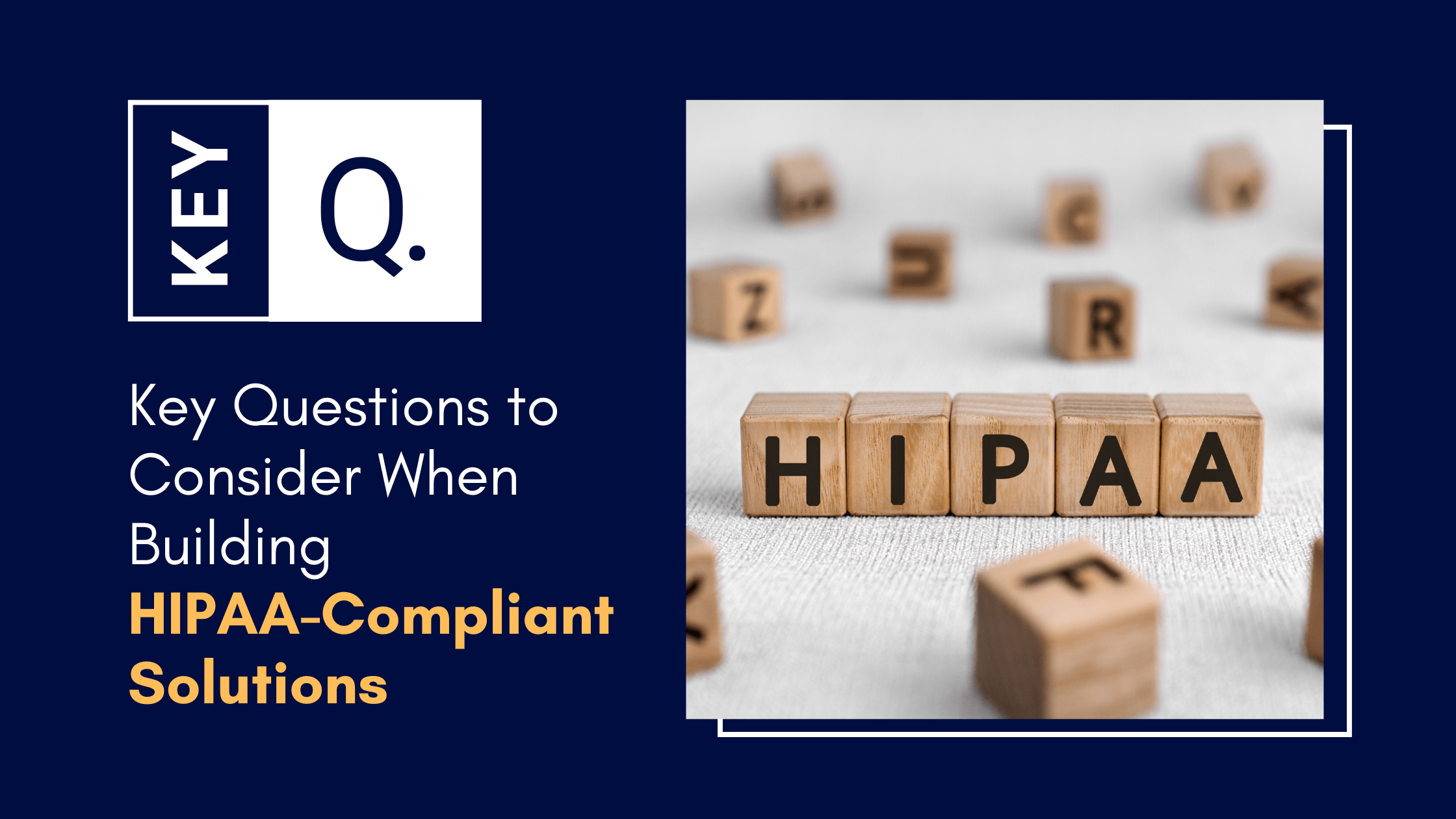
Summary: This post explores when and why video conferencing in healthcare must be HIPAA-compliant, and what features to look for. It outlines four common implementation paths: using off-the-shelf software, building a custom solution from scratch, integrating pre-built SDKs and APIs, or deploying a customizable white-label platform. The key takeaway: secure, compliant video communication is essential for delivering safe and effective virtual care.
Table of Contents
Introduction
When should video conferencing be HIPAA-compliant—and why does it matter?
Not every video call needs to follow strict healthcare regulations. But the moment a video conversation involves patient information, HIPAA compliance becomes essential. Using a tool that doesn’t meet these standards could lead to serious legal and security consequences.
HIPAA, the Health Insurance Portability and Accountability Act, was created to protect sensitive health information. It lays out clear requirements for the privacy, security, and transmission of electronic health data—what’s known as the HIPAA Security Rule.
Today, nearly every part of the healthcare system is digital: patient records, lab results, imaging, prescriptions, and treatment plans. This digital transformation has enabled faster, more coordinated care—but it also increases the risk of data breaches.
That’s where HIPAA compliance comes in. Any video conferencing platform used to discuss or share protected health information (PHI) must meet HIPAA’s strict security standards. Without it, healthcare providers risk exposing sensitive data—and facing significant penalties.
Find out more about – HIPAA Compliant Cloud Hosting: What does it mean?
The Rise of Video Conferencing in Healthcare
Video conferencing has become a cornerstone of modern telemedicine, offering a convenient way of doctor-patient communication. Via video calls, doctors can carry out remote examinations of patients or perform regular checkups of chronic patients without requiring them to spend time visiting the clinic. Both patients and doctors find using video conferences in healthcare highly convenient, and the telemedicine market continues to grow as a result.
Given this trend, developers of telehealth platforms must prioritize HIPAA compliance from the start, ensuring their solutions are fully equipped to protect patient data and meet regulatory standards.
When Is Video Conferencing Subject to HIPAA?
Not every video call is subject to HIPAA—but the moment a healthcare provider uses video conferencing to exchange, discuss, or display protected health information (PHI), HIPAA rules apply.
PHI includes any information that can identify a patient and relates to their past, present, or future physical or mental health, the provision of care, or payment for healthcare services. This covers a wide range of data, from names and birth dates to diagnoses, medical records, prescriptions, and insurance details.
Here are common scenarios where video conferencing must be HIPAA-compliant:
- Virtual doctor-patient consultations where medical history, symptoms, or treatment plans are discussed.
- Remote therapy or counseling sessions that involve personal or mental health information.
- Telehealth check-ins with chronic care patients, including discussions of lab results or ongoing treatment.
- Post-operative follow-ups conducted over video, especially when sharing wound images or recovery progress.
- Collaborative care meetings between healthcare professionals where a patient’s PHI is shared.
Even if a call feels casual or routine, it becomes subject to HIPAA the moment PHI is part of the conversation. For this reason, healthcare providers must be diligent in choosing video platforms that offer the necessary safeguards.
A video conferencing tool is not automatically HIPAA-compliant just because it’s secure. To meet HIPAA requirements, the platform must implement specific technical, administrative, and physical safeguards that protect the confidentiality, integrity, and availability of protected health information (PHI).
Here are the key components that make a video conferencing tool HIPAA-compliant:
1. End-to-End Encryption
Under HIPAA all data transmitted during a video call must be encrypted both in transit and at rest, using strong industry-standard protocols. This ensures that even if data is intercepted, it cannot be read or misused.
2. Access Controls
The platform must support secure user authentication—such as usernames, strong passwords, two-factor authentication (2FA), and role-based access—so that only authorized individuals can access PHI.
3. Audit Controls and Logs
HIPAA requires that all access to PHI be logged and monitored. A compliant platform should offer audit trails to track who accessed the system, when, and what actions were performed.
4. Business Associate Agreement (BAA)
The formal partnership between healthcare providers (“covered entities”, in HIPAA terms) and communication services (“business associates”) must be in the form of a BAA (“Business Associate Agreement“). The BAA must ensure that the communication or cloud service provider takes the necessary measures to protect PHI that is stored or transmitted using its resources. For example, a BAA should require that the business associate ensures sufficient system availability and data recovery, describes the data processing formats, and establishes responsibility for violations.
5. Automatic Logoff and Session Timeout
To prevent unauthorized access, platforms should have automatic logoff features after periods of inactivity and time-limited session access.
6. Secure Data Storage
If the platform stores any video recordings, messages, or metadata, that data must be securely encrypted and stored on HIPAA-compliant infrastructure with restricted access.
7. Staff Training and Policies
Compliance isn’t just about technology—it also involves people and processes. Vendors must demonstrate that their teams are trained in HIPAA best practices and have clear security policies in place.
How to Choose HIPAA Video Conference Software
When it comes to implementing secure video conferencing for healthcare, there’s no one-size-fits-all solution. The best choice depends on your resources, timeline, technical capacity, and need for customization. Generally, healthcare providers and telehealth developers have four main options:
- Use off-the-shelf software
- Build a custom solution from scratch
- Integrate pre-built SDKs and APIs into your app
- Deploy a customizable white-label solution
Each path has its pros and cons, so let’s explore them in more detail.
1. Off-the-shelf software
While there are many video conferencing solutions in the market, not all of them are suitable for healthcare. In fact, many popular platforms do not meet HIPAA requirements by default and therefore cannot be used to handle PHI.
For example, Zoom’s free or standard plans are not compliant with HIPAA regulations. Only Zoom for Healthcare offers the security features and BAA needed for telehealth use.
This pattern holds true across many platforms, with the free or basic version typically lacking HIPAA compliance. In these conditions, healthcare providers need to be careful and attentive when choosing their communications service, as it needs to provide all the safeguards required under HIPAA for business associates.
Fortunately, several video conferencing platform developers have already started implementing HIPAA compliance in the very core of their products. These tools typically provide essential features such as encryption, authentication, and a Business Associate Agreement (BAA).
Pros:
- Quick to deploy
- No development work required
- Trusted and familiar interface for users
Cons:
- Limited customization and branding
- Less control over user experience
- May include features you don’t need (or miss ones you do)
Find out more about – Top HIPAA Compliant Chat Apps
2. Building from scratch
Developing a custom HIPAA-compliant platform from the ground up gives you full control over every feature, security mechanism, and user interface element. This option is ideal for organizations with unique workflows or advanced privacy needs—but it’s resource-intensive.
Pros:
- Complete control over design and features
- Tailored to your exact business needs
Cons:
- High development and maintenance costs
- Requires in-house technical expertise
- Longer time to launch
3. Pre-built SDKs and APIs
A faster, more cost-effective alternative than building from scratch but still allows for customization is to integrate pre-built communication SDKs and APIs (like those from QuickBlox. You can build your own interface and workflows while relying on proven, HIPAA-compliant backend infrastructure. QuickBlox provides full support for HIPAA compliance, including a signed BAA and robust technical safeguards with the use of their feature -rich SDKs and APIs, allowing developers to effortlessly embed secure communication features directly into their telemedicine application:
Pros:
- Faster and more affordable than building from scratch
- High degree of flexibility and customization
- Reduces security and compliance risk by using vetted components
Cons:
- Requires developer resources for integration
- Backend and SDK updates managed by the vendor
4. White-Llbel telehealth solution (e.g., Q-Consultation)
A
white-label telehealth solution like Q-Consultation offers the speed of an off-the-shelf product with the branding flexibility of a custom build. It includes pre-built features like virtual waiting rooms, video consultations with transcription, AI Assistant, patient queues, file sharing, and authentication—all hosted on a secure, HIPAA-compliant backend.
Pros:
- Quickest time to market
- Customizable branding and features
- No need to build or manage backend infrastructure
Cons:
- Some feature limitations compared to custom builds
- Customization may be restricted to the platform’s framework
Find out more about – Doctor-Patient Communication with Q-Consultation
Conclusion: Prioritize Compliance Without Compromising Care
As telemedicine grows, video conferencing is now central to modern healthcare delivery. But whenever patient data is involved, HIPAA compliance is essential—not just for legal protection, but to maintain patient trust.
Fortunately, you don’t have to start from scratch. Platforms like QuickBlox offer secure, HIPAA-compliant video communication tools and ready-to-use telehealth solutions like Q-Consultation, helping you launch faster and with confidence.
Ready to start building? Contact us now to learn more.
Talk to a sales expert
Learn more about our products and get your questions answered.
Contact sales FAQs
1. What is HIPAA compliance in video conferencing?
HIPAA compliance in video conferencing means that the platform meets specific technical requirements for protecting patients’ health information during virtual consultation.
2. Do all video conferencing tools need to be HIPAA-compliant for telehealth?
Only if they’re used to transmit, store, or discuss protected health information. If no PHI is involved, HIPAA does not apply—but for any doctor-patient interaction, compliance is required.
3. What are the key features of a HIPAA-compliant video platform?
Important features include end-to-end encryption, access controls, audit logging, session timeouts, secure data storage, and a signed BAA.
4. What is a Business Associate Agreement (BAA) and why is it important?
A BAA is a legal contract between a healthcare provider and a vendor that handles PHI. It ensures the vendor is responsible for complying with HIPAA regulations when managing sensitive data.
5. Can I use free video conferencing software for healthcare?
Most free versions of video conferencing software are not HIPAA-compliant and should not be used for telehealth unless they explicitly offer compliance features and a BAA.
6. Is recording video consultations allowed under HIPAA?
Yes, but only if the recording is stored securely in a HIPAA-compliant environment and access is restricted to authorized personnel.








